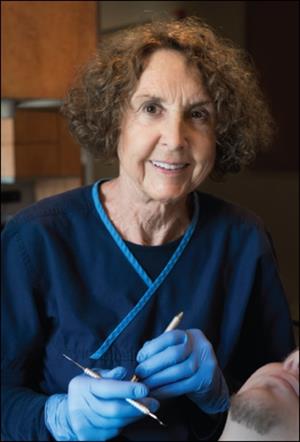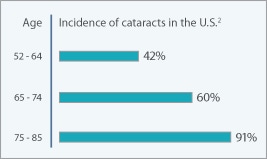Posted by: Clemson Eye in News

Anderson Independent, September 1, 2014
Life expectancy in the United States has been increasing steadily over the past century. In the early 1900s, there were 3 million Americans older than 65. Today, there are approximately 35 million or 13% of the population. By 2030, it’s estimated there will be 70 million Americans over 65. So basically, 65 is the new 55.
This increase in longevity is attributed to advances in medicine and, obesity aside, generally healthier lifestyles.
The average expected age for an American born in 2009 is now 78.5 years.1 Americans who reached 65 in 2011 are projected to live another 21 years to age 86. For those who reach 86, their life expectancy extends to 93.2Good News, Bad News
So if the good news is we are living longer, the bad news is many Americans are working longer than expected, too. There are many reasons for this:
- Fear they’ll outlive their retirement savings.
- Financial fallout from the ‘Great Recession’, particularly if they were counting on equity in their homes to pay for retirement.
- Many people enjoy their careers and simply prefer to remain in them, or start a new one.
- Some prefer remaining at work to the possibility of being bored at home.
Visual health is important to being able to work at any age. But as we age, vision becomes more of a challenge for a greater number of us. Cataracts are often the culprit.
Cataracts, the clouding of the natural eye lens,
Cataracts by the Numbers

Surgery is the only known treatment for cataracts, and two things happen during the surgery. Your clouded lens is removed and an artificial intraocular lens is implanted. The lens requires no care and simply becomes a permanent part of your eye. You don’t see or feel the new lens implant.
Cataract surgery, a 15-minute out-patient procedure, is one of the safest and most commonly performed surgeries in the U.S. 4
Carol Bridges is a young-at-heart American who has chosen to forgo retirement and continue working part-time. She is a dental hygienist in Pickens, South Carolina, and very much depends on good vision to perform her work.
When Carol started to notice colors diming and driving becoming more difficult, she booked an eye exam at Clemson Eye.
After her exam, her eye doctor, Dr. Joe Parisi, confirmed she had cataracts. After discussing all the options with him, Bridges chose laser assisted cataract surgery with an advanced multifocal lens implant: “I work at close range all day long. The laser surgery with themultifocal lens, the ReSTOR® lens, has changed my life. It’s made my work so much easier. I don’t have to bother with glasses anymore. It’s wonderful,” says Bridges.
“With traditional cataract surgery, where a basic monofocal lens is implanted, it clears the vision at a single focal point, but it can’t correct astigmatism, presbyopia and other vision problems. This means if you wore corrective eye wear before your cataract surgery, you’ll still need it afterward,” says Dr. Donald Glaser, the eye surgeon at Clemson Eye’s Anderson clinic.
Experience shows that better vision improves quality of life, optimism, safety from falls and driving accidents, and overall independence. According to a recent study published by the American Academy of Ophthalmology, people who undergo cataract surgery actually live longer than those who don’t.5 This is likely an outcome of all the associated benefits of better vision.Innovations in Cataract Surgery
“Recent advances in laser cataract surgery and the types of advanced lens implants available have taken cataract surgery to a whole new level,” says Dr. Glaser. “Through these innovations, we are able to deliver excellent visual outcomes for our cataract patients and eliminate – or drastically reduce – their need for eyeglasses.”6
There are different types of advanced lens implants from which to choose. Lens implants like the Toric® lens correct astigmatism, while multifocal lens implants like ReSTOR® or Crystalens® lenses provide a range of corrected vision, from close up to far away.
In consultation with her eye surgeon, Carol Bridges opted for a multifocal lens implant: “My vision is outstanding now,” she says. “I’m very pleased. And my experience at Clemson Eye was terrific, too. Dr. Parisi is an excellent surgeon. Everyone I dealt with there was extremely organized. They explained things to me. I was well prepared for the experience.”Eye Exams for All Seniors
Whether you think you have a cataract or not, an annual eye exam is recommended for all seniors to help ensure your visual health, quality of life, and ability to continue working, should you so desire. A dilated eye exam is the only way to confirm you have a cataract.
Basic cataract surgery is covered by most insurance plans. Laser assisted cataract surgery and advanced lens implants require an additional payment. If you’re a Clemson Eye patient, you have the option of 24-month, 0% payment plans.
Clemson Eye have served patients in the Upstate for more than 40 years through its full-service clinics in Greenville, Anderson, Easley, Clemson, and a LASIK center, Spectrum Lasik, in Greenville. The surgeons at Clemson Eye were among the first in the country to perform Laser Assisted Cataract Surgery with advanced lens implants. We use the most advanced suite of laser-guided surgery systems available today.
Click here to download or view this article in PDF form.
1. Robert Anderson, Ph.D., chief, Mortality Statistics Branch, National Center for Health Statistics, U.S. Centers for Disease Control and Prevention; David Katz, M.D., M.P.H., director, Yale University Prevention Research Center, New Haven, Conn.; U.S. National Center for Health Statistics, Jan. 6, 2014, report, United States Life Tables, 2009.
2. “Retirement now requires those living longer to work longer,” Jill Schlesinger, Chicago Tribune, Oct. 16, 2013.
3. The Givan Herbert Eye Institute. University of California, Irvine. Cataract Surgery. http://www.eye.uci.edu/cataract.html. [Accessed March 29, 2013].
4. http://www.aao.org/publications/eyenet/200609/pearls.cfm
5. Ophthalmology, Journal of the AAO, September 2013. www.aao.org/newsroom/release/20130904.cfm
6. Clemson Eye Laser Cataract with Advanced Intraocular Lens Replacement Results, 2013.